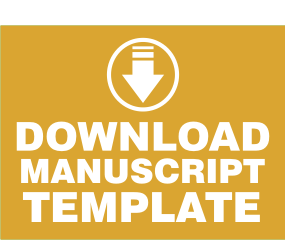Development of Cheerful Interactive Multimedia (MIC) in Science Subjects for Class V SD KIP V Bara-Baraya Makassar City.
(1) Universitas Negeri Makassar
(2) PGSD UNIVERSITAS NEGERI MAKASSAR
(3) PGSD UNIVERSITAS NEGERI MAKASSAR
(*) Corresponding Author
DOI: https://doi.org/10.26858/ijest.v2i2.43421
Abstract
The goal of this research is to determine whether cheerful interactive multimedia (MIC) can be used in science classes for fifth-grade students at KIP V Bara-Baraya elementary school, Makassar City. This research develops products based on the results of an analysis of student needs using research and development (R&D) types. The research subjects were 20 students in class 5A, and the research and development procedure used was the Alessi & Trollip development model, which began with the planning stage, the design stage, and the development stage. Products developed through additional research go through two stages of testing: alpha and beta. The alpha test or validity test in this study involved two validators, namely the material expert validator and the media expert validator. Based on the results of the media expert validation analysis, an overall score of 93 was obtained with a percentage of 83.03%, so multimedia products are in the "very eligible" category. The results of the material expert validation analysis obtained an overall score of 70 with a percentage of 92.10%, so multimedia products are in the "very eligible" category. As for the results of the responses of students and teachers for each product, they obtained percentages of 92.9% and 93.05%, so that multimedia products were in the "very eligible" category. Based on the results of this study, it can be an additional reference for future researchers and an innovation in developing interactive multimedia in elementary schools.
Key Words: Cheerful Interactive Multimedia, Science Subjects, Allesi and Trollip
References
Alessi, Stephen M., and Stanley R. Trollip (2001). Multimedia for learning: methods and development Massachusetts: A Pearson Education Company
Budiman Haris (2017) The Role of Information and Communication Technology in Education 8: 75-83, Journal of Islamic Education.
Baharuddin, Daulay, and Indra (2017) "The Development of Computer-Based Learning Media at a Vocational High School." International Journal of Geomate, 12 (30): 96–101.
Faisal, Muh. et al. 2020 Increasing the Competence of Elementary School Teachers in Developing Digital Teaching Materials in Gowa Regency Journal of Educational Publications, vol. 10, no. 3, pp. 266-70.http://ojs.unm.ac.id/index.php/pubpend
Ilhan, G. O., and Oruç, A. 2016. The impact of multimedia on student performance: A case study of a social studies classJournal of Research in Education and Science (Online), Vol. 3 No. 1: 877-882, http://eric.ed.gov/, (accessed August 1, 2022).
Irawati, D. A., Astiningrum, M., & Diwantari, A. R. (2018). Developing a 2D Oral and Dental Health Game Using the Analytical Heurarchy Process Method. National Seminar on Informatics, UPN "Veteran," Yogyakarta, 1 (1), 173–183.
Istiana, P. (2016). Digital Native Learning Styles and Attitudes toward Digital Technology and Libraries (pp. 343–350) Yogyakarta: Unpad Press. Retrieved from https://repository.ugm.ac.id/139214/
Lilisari, Supriyanti, S., & Hana, MN. (2016). Students' Creative Thinking Enhancement Using Redox Reaction Interactive Multimedia Creative Thinking Enhancements, 21 (1), 30-34.
Ni Komang Ari Arilia Dewi and Maria Goretti are here.(2022). Cheerful Interactive Multimedia on the Theme of Living Things, Class IV SD 6(1), 72-80. Journal of Educational Research and Development.
Permana, E.P., and Nourmavita, D. (2017). "Development of Interactive Multimedia in Science Subject Material for Describing the Life Cycle of Animals in the Surrounding Environment for Grade IV Elementary School Students" 10(2), 79-85. Scientific Journal of Elementary School Teacher Education.
Puspita, S., A., and A. Setiawan (2018).The Development of Internet-Based Economic Learning Media Using a Moodle Approach 3(2), 100-109, International Journal of Active Learning.
Schlechtendahl, J., Keinert, M., Kretschmer, F., Lechler, A., & Verl, A. (2015). Making existing production systems Industry 4.0-ready Production Engineering, 9(1), 143–148.
Talizaro. (2018). The Role of Learning Media in Increasing Interest in Student Learning Media Journal of Educational Communication, Vol. 2, No. 2.
Tanti, Isnandi, H., & Maison (2020) Construction and Validation of Problem-Based Physics Teaching Materials (Problem-Based Learning) to Improve Students' Generic Skills 5(1), 28-34 in JoTaLP: Journal of Teaching and Learning Physics.
Shofia, M. I., Redhana, I. W., & Juniartina, P. P. (2020). An analysis of the needs of developing science learning media based on argument mapping 3(1), 31-40. Indonesian Journal of Science Education and Learning
Surjono, H. D. (2017). Concept and Development of Interactive Multimedia Learning in Fitriyanti & Masruri (Eds. ), UNY Press (First). UNY Press.
Article Metrics
Abstract view : 109 times |Refbacks
- There are currently no refbacks.
Copyright (c) 2023 Nurfikriani Eka Putri, Suarlin Suarlin, Andi Makkasau

This work is licensed under a Creative Commons Attribution-NonCommercial-ShareAlike 4.0 International License.
International Journal of Elementary School Teacher
ISSN 2776-6233 (online)
Email: [email protected]

This work is licensed under a Creative Commons Attribution-ShareAlike 4.0 International License.









